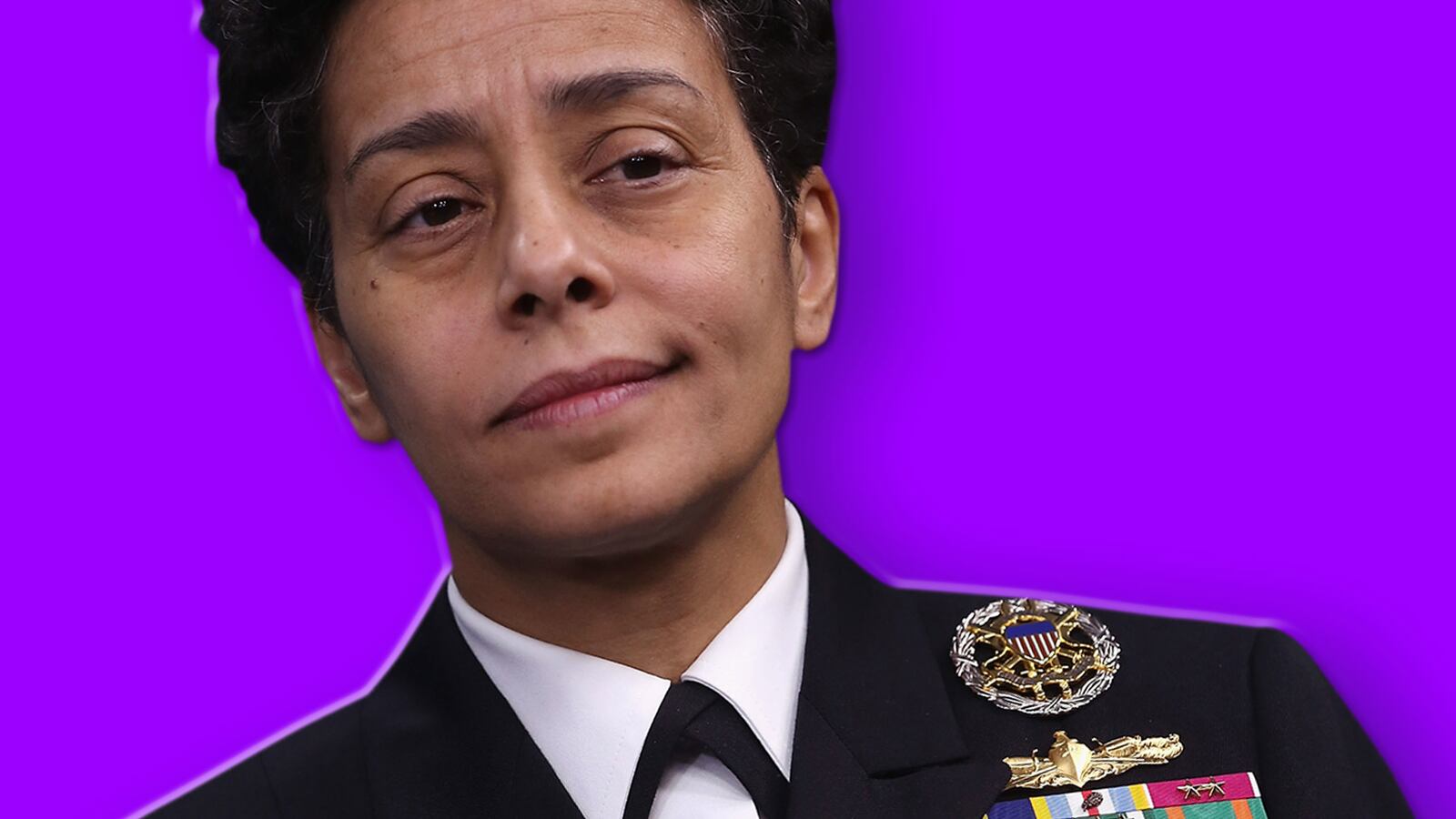The USS Porter was patrolling international waters in the Black Sea last month when four Russian military aircraft buzzed the guided missile destroyer as close as 200 yards. The captain and crew had seconds to decide whether to fire on them and provoke an international incident, or just watch them fly by, over and over.
As Americans stateside focused on the first draft of the travel ban and the devolving fate of now-former National Security Adviser Michael Flynn, Russia was sending a good old-fashioned Cold-War-style hello to the Trump administration.
“The message is, ‘we see this as our space…’ signaling ‘we don't think you should be here,’” said four-star Admiral Michelle Howard, who commands Naval Forces Europe and Africa, based at Allied Joint Force Command Naples.
“We’re in international waters… we’re a member of NATO… So we're going to be there,” she said in an interview with The Daily Beast of such incidents.
That spells more interesting times ahead, and challenges the notion that a more Moscow-friendly Trump administration can dissuade Russian President Vladimir Putin from his mission to return to superpower status.
For Howard, it’s “back to the future,” coming full circle from the Cold War era when she first went to sea as a young ensign after graduating from the U.S. Naval Academy. “Our forces were bigger so there was a lot more interaction,” but the principles for these intentional close encounters at sea remain the same, she said.
“You look at the different assets coming at you… then you make a determination: is it actually headed at me, and then who is it, and then, is it threatening?”
Sensors work overtime to figure out, if the vessel or plane approaching is armed with weapons? Does it have its targeting radar systems on?
“You work your way through, looking at the asset with all of your sensors down to even sometimes the lookout on the deck, and then [ask], ‘What angle are they coming at you, how fast are they coming at you,’” she said. “Then you make a determination as a commander, ‘Is an actual threat or is it someone trying to be provocative?”
The challenge now versus the 1980s? Everything’s faster.
“That generally has to happen in seconds…with the speed today,” Howard said.
Back in the 1960s, these type of incidents were commonplace. Both the Russian and the U.S. navies were larger, and the tension higher, with flybys by hot-dog pilots a common harassment tactic. Howard said that after a Russian pilot was killed after crashing his own jet during such a dangerous maneuver, the two sides decided they were not only needlessly risking lives—but also risking the possibility of triggering nuclear war.
The two sides negotiated something called the Incidents at Sea Agreement in 1972, which requires them to follow international rules of the sea when interacting with each other and meet once a year to discuss alleged infractions.
That Cold War relic is still going. Admiral Howard will be hosting the next “INCSEA” meeting at her headquarters some time this spring, though Russian embassy officials in Washington, D.C., could not immediately confirm that the annual meeting would take place.
The American side is still compiling its list, including incidents like the USS Porter’s Black Sea encounter; a Russian fighter aircraft buzzing a U.S. P-8A Poseidon reconnaissance aircraft last September; and a Russian frigate coming within 150 yards of the Dwight D. Eisenhower carrier strike group, aiming for it, then quickly turning away, among other close encounters that month.
Howard is looking forward to laying out the American point of view in her direct, no-nonsense manner, knowing that she’ll likely be one of the few senior women officers in the room. She’s used to that. Howard was the first African-American woman to command a ship in the U.S. Navy, the first African-American female four-star in the Navy, and the first woman Vice Chief of the Navy, among other firsts.
She was in Washington, D.C., to speak to the United States Institute of Peace about the role of women at war, and the U.S. military’s evolving efforts to take advantage of women’s skills on the battlefield - such as their unique ability as part of “female engagement teams” in Afghanistan to communicate with half the population that normally goes unconsulted because it’s a cultural and religious affront for male soldiers to approach Afghan women.
She said the U.S. military still hadn’t quite figured out how to include gender as a tool when planning a military campaign, by identifying that there might be situations where re-constituting such female engagement teams might help gather intelligence and ground truth an all-male cadre couldn’t access.
But however lagging the U.S. military might be on gender integration, Russia is further behind.
One of her earlier encounters with Russians was during a peacekeeping deployment off the coast of Albania in 1996, during a warmer period of U.S.-Russian relations just a few years after the Soviet Union was dissolved. Russia was celebrating its 200th anniversary of the Russian Navy and the Russian aircraft carrier, the Admiral Kuznetsov was also patrolling the area. The American and Russian commanders arranged to tour each other’s ships.
“I’ll never forget when the Russians…in their dress uniforms, stepped off the Hind (helicopter),” she said, recalling the history-making encounter. “Part of our flight deck crew was female. They literally stopped, like ‘what?’”
Howard was the second in command—the “XO” or executive officer of the ship—and gave some of the visiting Russians a tour.
“There was this one officer, oh my gosh… he just kept quizzing me: ‘Are you really the number two?’” he kept asking in disbelief through an interpreter. “It’s like they thought the women were some sort of… Potemkin village of gender integration.”
“Yes, I am the XO of the ship” she’d reply, but the Russian kept shaking his head, and rolling his eyes. She decided there was one sure way to prove it.
“I finally said ‘would you like to see my cabin?’ Because for ships, the one thing that’s common for navies is that the more real estate you have, the more important you are,” she said. “And he’s like ‘da!’ So I take him and the interpreter up to my cabin,” a spacious spread for a ship of perhaps 12 by 20 feet or more.
“He looks around, there’s a picture of me and my husband on my desk…All of sudden he speaks English. ‘Very big room! You are XO!”
And with that, they started speaking in English about his family and his life at sea. “It was great!” she said.
It’s one of those friendlier encounters at sea with Russians more recently that gives the four-star hope. She last met Russian commanders at sea was during a NATO naval exercise in 2010, where she got to meet a young Russian captain and tour his ship.
“He said some things I found remarkable but I found him to be sincere,” she said. He told her, “I think it's important for Russia and the U.S to have a good relationship” and talked about “being a father and having peace for his sons.”
The American admiral couldn’t agree more.
“You’ve got to remember, we're not at war,” she said, adding that Russia and the U.S. do share at least one common goal. “We want to eliminate ISIS. So we all have to be able to operate in the same area.”
This article was corrected to reflect that Vice Admiral Chris Grady commands U.S. Sixth Fleet and reports to Admiral Howard who commands Naval Forces Europe and Africa, and to correct the date Admiral Howard met the young Russian Captain at BALTOPS from 2009 to 2010.






